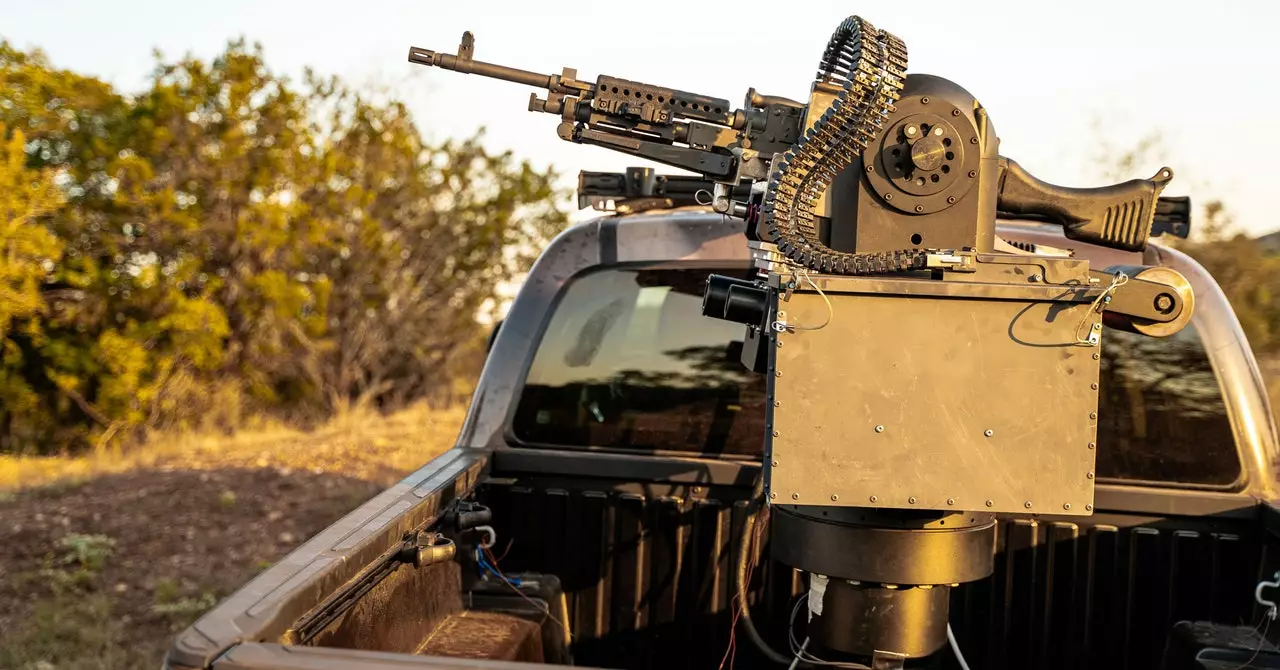As modern warfare continues to evolve, the United States military faces a formidable adversary: low-cost, weaponized drones. These aerial threats pose a significant challenge to American troops stationed abroad, compelling military strategists to devise innovative measures to ensure the safety of their personnel. The escalating frequency of armed drones on the battlefield necessitates a profound transformation in defensive technology, prompting the U.S. Department of Defense (DoD) to explore multifaceted approaches for counteracting these airborne nuisances.
Innovative Solutions in the Face of Adversity
In a compelling display of ingenuity, the Pentagon is considering the integration of advanced autonomous systems to combat drone warfare. At an event known as the Technology Readiness Experimentation (T-REX) in August, the Defense Department showcased a groundbreaking development: the Bullfrog, an artificial intelligence (AI)-enabled robotic gun produced by the emerging defense contractor Allen Control Systems. This innovative system features a machine gun mounted on a specialized turret, equipped with cutting-edge electro-optical sensors and AI-driven capabilities that enhance target engagement.
The Bullfrog’s design aims to achieve a level of precision that surpasses traditional military firearms. Unlike human-operated weapons such as the M4 carbine or the promising XM7 rifle, the Bullfrog autonomously locks onto and neutralizes drone threats with remarkable accuracy. Early footage from the system’s testing demonstrates its potential, effectively illustrating the Bullfrog’s ability to bring down drones with minimal rounds—a feat that could redefine aerial defense strategies for the military.
Assessing the Military’s Reaction
The initial reception to the Bullfrog from Pentagon officials underscores its promise. Alex Lovett, the deputy assistant secretary of defense for prototyping and experimentation, expressed satisfaction with the weapon’s performance during these tests, spotlighting the DoD’s interest in adopting this innovative system. Should the Bullfrog gain official endorsement, it would mark a significant milestone in military technology as the first known lethal autonomous weapon deployed in U.S. defense operations, fundamentally changing the landscape of drone engagement.
The challenge posed by enemy drones is profound, as these fast-moving aerial units can evade conventional methods of engagement. Even the most skilled marksmen encounter difficulties when attempting to target such agile threats. Consequently, the military’s search for effective countermeasures has led to diverse strategies, including the acquisition of specialized ammunition that mimics effective shotgun dispersal and the development of advanced optics designed to improve accuracy. Furthermore, the integration of counter-drone tactics into basic training illustrates the military’s recognition of the urgency in addressing this challenge.
Rather than solely rely on traditional measures or incremental enhancements, Allen Control Systems co-founder and CEO Steve Simoni argues for a more profound transformation in defensive approaches. Simoni believes that combining sophisticated robotics and AI capabilities can revolutionize small arms effectiveness against drones, negating the labor-intensive guesswork involved in target tracking and engagement.
The shift toward integrating high-tech solutions like the Bullfrog signals an important departure from conventional thinking in military defense. It emphasizes the critical role that technology plays in contemporary warfare, where threats can emerge unexpectedly from above. The response to drone warfare necessitates not only innovative weaponry but also a cultural change within military training and preparedness.
The unfolding advancements in drone combat technology signify a pivotal transformation in military defense strategies. The Bullfrog and similar autonomous systems encapsulate the future of aerial defense, characterized by an increased reliance on robotics and AI. As adversary drones proliferate, the need for innovative solutions will only escalate, pushing the boundaries of our understanding of warfare and weaponry.
While the Pentagon’s potential adoption of the Bullfrog paints an optimistic picture for counter-drone strategies, it also raises ethical questions surrounding the deployment of lethal autonomous weapons. The future will undoubtedly require collaboration between defense technology developers and policymakers to ensure that these advancements are used responsibly and effectively in the complex arena of modern warfare. Thus, as the U.S. military moves forward, it must balance innovation with ethical considerations, creating a comprehensive framework that prepares its forces for the challenges of today and tomorrow.


Leave a Reply